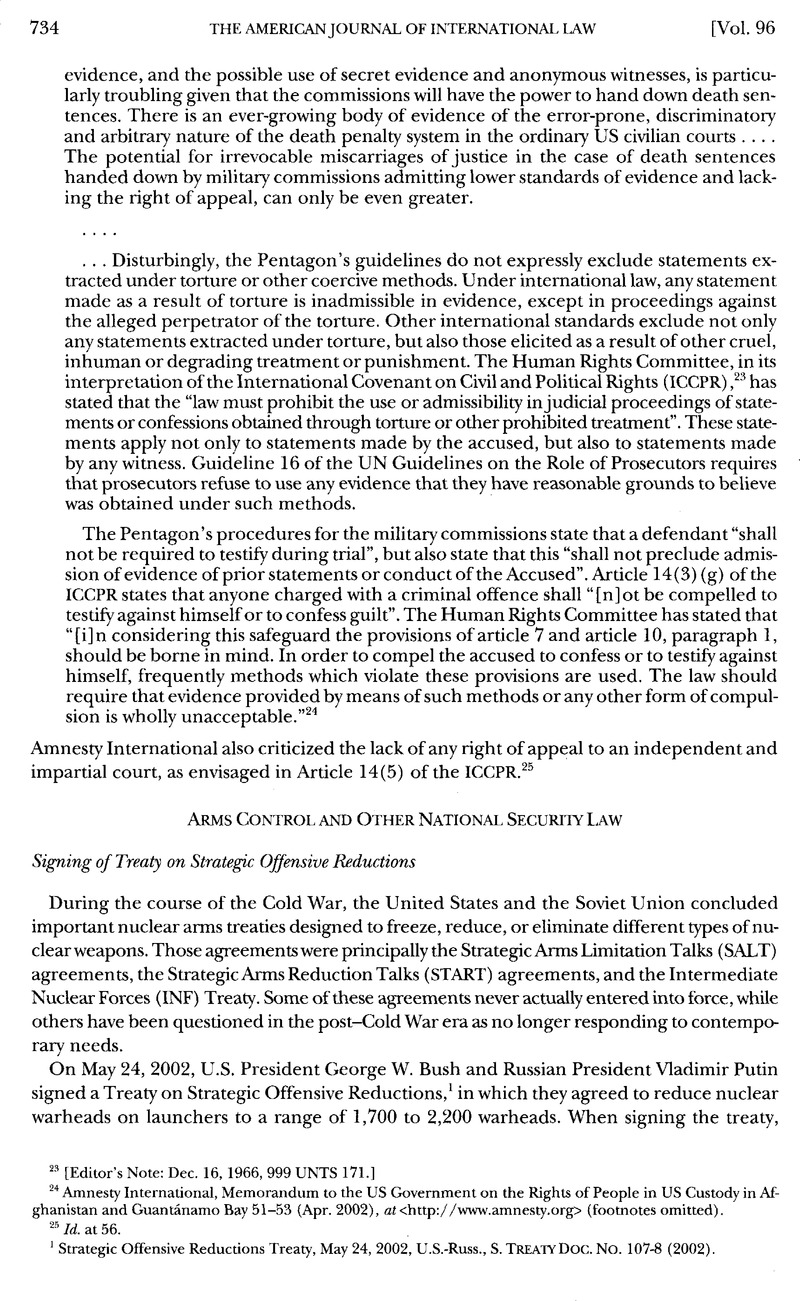No CrossRef data available.
Article contents
Signing of Treaty on Strategic Offensive Reductions
Published online by Cambridge University Press: 10 March 2017
Abstract

- Type
- Contemporary Practice of the United States Relating to International Law
- Information
- Copyright
- Copyright © American Society of International Law 2002
References
1 Strategic Offensive Reductions Treaty, May 24, 2002, U.S.-Russ., S. Treaty Doc. No. 107-8 (2002).
2 White House Press Release on President Bush, Russian President Putin Sign Nuclear Arms Treaty (May 24, 2002), at <http://www.whitehouse.gov>; see David, E. Sanger & Wines, Michael, Bush and Putin Sign Pact for Steep Nuclear Arms Cuts, N.Y. Times, May 25, 2002, at Al.Google Scholar
3 Treaty on the Reduction and Limitation of Strategic Offensive Arms, July 31, 1991, U.S.-U.S.S.R., S. Treaty Doc. No. 102-20 (1991). Under this Treaty, commonly known as “START I,” the two parties agreed to reduce nuclear warheads to 6,000 each until 2006. Under the “START II” treaty, the two parties agreed to reduce nuclear warheads to 3,000 to 3,500 each. See Treaty on Further Reductions and Limitations of Strategic Offensive Arms, Jan. 3, 1993, U.S. -Russ., S. Treaty Doc. No. 103-1 (1993). While the START I treaty entered into force in 1994, the START II treaty has not yet entered into force. On June 14, 2002, Russia announced that it was withdrawing from START II, in reaction to the U.S. withdrawal from the Anti-Ballistic Missile Treaty. See Sharon LaFraniere, Russia Quits Arms Pact, Wash. Post, June 15, 2002, atA20.




